The OnePlus 7 Pro Review: Outstanding Performance & Screen, Adequate Everything Else
by Andrei Frumusanu on June 19, 2019 12:00 PM EST- Posted in
- Mobile
- Smartphones
- OnePlus
- OnePlus 7 Pro
GPU Performance
This generation GPU performance uplifts of the new Snapdragon 855 were relatively muted in devices that we’ve tested until now; Qualcomm had only promised and managed an average improvement of 20% over last year’s Snapdragon 845, even though the chip came on a new process node that should have enabled it for larger power and performance improvements.
The OnePlus 7 Pro thus seemingly shouldn’t be any different than the S10, G8 or other S855 phones in terms of the peak performance of the phone. Where OnePlus however can differentiate itself is the sustained performance of workloads. The company had made an emphasis on its “10-layer cooling system” which in layman terms consists of a heatpipe system with some new carbon dissipation tape in the internal design of the phone and its motherboard. In particular OnePlus claims no slow-downs in games, while it’s not the first company to promise this, let’s see if this time around the phone is able to achieve this.
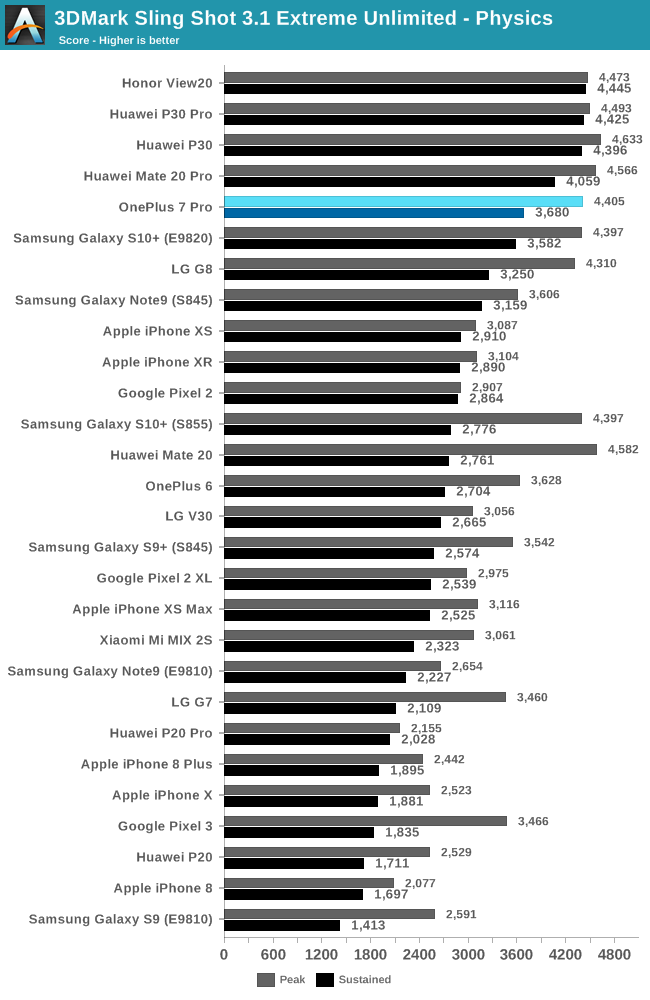
Starting off with the 3DMark Physics test which is mostly a CPU performance workload within a GPU power constrained scenario, we see that the peak performance of the phone is in line with other SoCs of this generation. What does stand out however is that the sustained performance, even though not as good as what we see on Kirin 980 devices, is indeed better than the Galaxy S10+ and the G8.
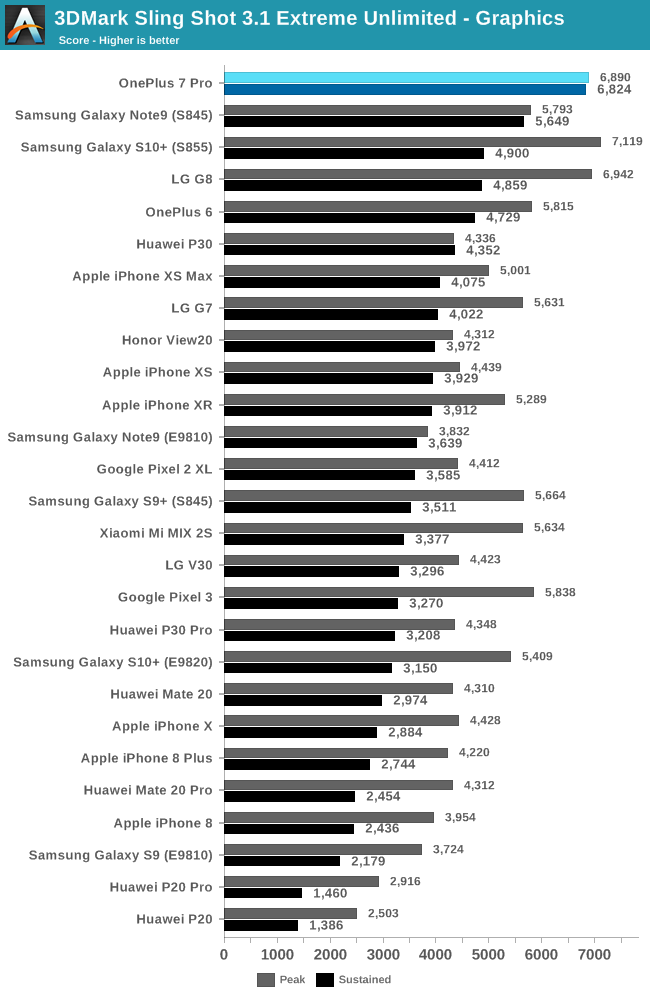
Moving onto actual GPU-constrained scenarios, we’re now starting to see what OnePlus was talking about: The OnePlus 7 Pro doesn’t seem to throttle much at all even after long prolonged periods of load. In 3DMark the device takes the very top spot in terms of performance. Until now last year’s Note9 was still the leader in this regard precisely because it was throttling less than newer Snapdragon 855 phones this year, but now with the OP7Pro also not throttling, it’s actually able to consistently showcase the SoC’s actual performance improvement.
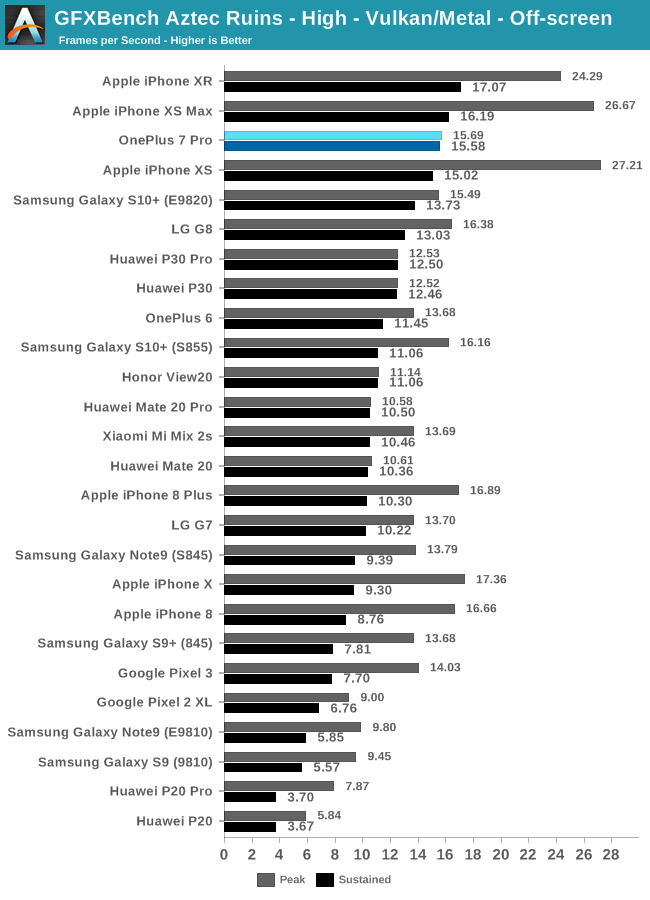
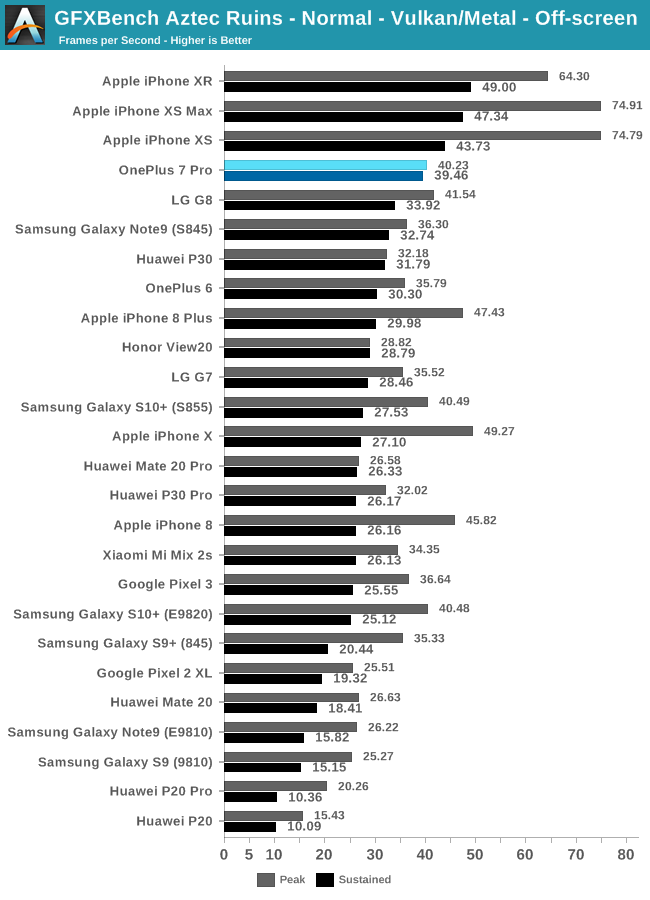
In the GFXBench Aztec benchmarks we see a similar story: There’s almost no throttling at all happening, and the device is able to maintain near peak performance seemingly endlessly.

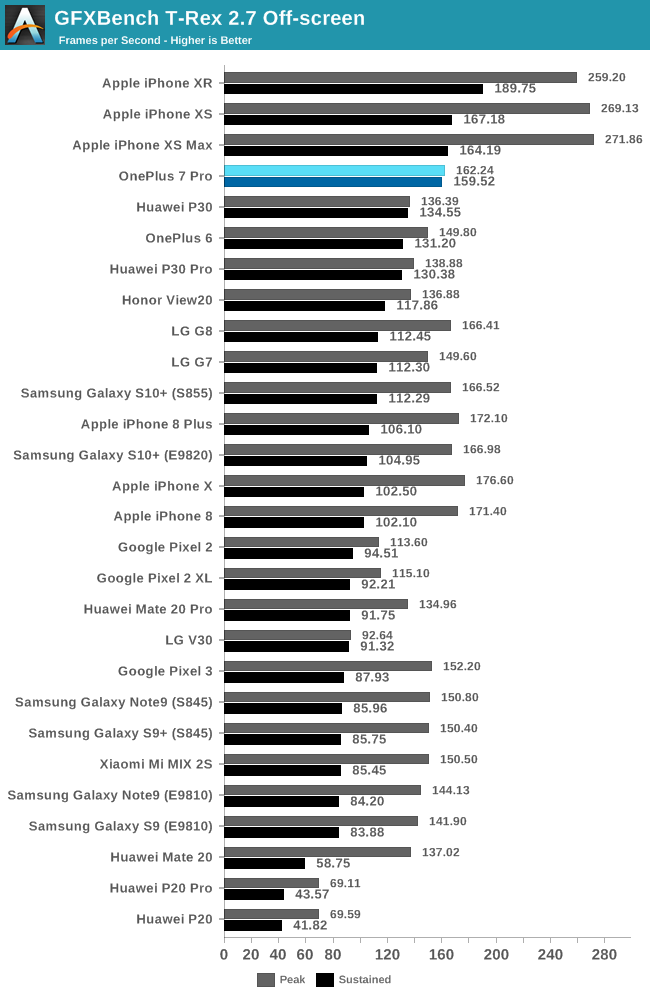
In Manhattan 3.1 and T-Rex we again see excellent sustained performance. It was a bit odd to see that the OP7Pro’s peak performance was slightly less than the S10+ and G8’s, it’s possible OnePlus is running the GPU at a slightly lower clock or has the DRAM running at more lax timings. However this doesn’t matter as it takes the performance lead after a short period of gaming.
Outstanding Sustained Performance – At A Cost
Overall, the OnePlus 7 Pro is currently the best performing Android device out there for gaming. OnePlus indeed was able to achieve an excellent thermal dissipation system, and the phone is able to disperse the heat across its chassis in a much more even manner than any other phone.
It’s to be noted that this still isn’t enough to catch up to Apple’s latest iPhone – here we’re just hitting fundamental limits of the Snapdragon 855 chipset which isn’t able to compete in performance and efficiency to the latest A12 chipset.
Although the thermal dissipation system of the OnePlus 7 Pro is excellent and better than a lot of other devices in the market right now, it does come at a cost. The company is still extremely lax in terms of maximum device temperatures under load. I was able to measure a peak of 51°C in terms of screen skin temperature, whereas devices such as the S10 will not allow for more than 42-43°C in the same scenario. So while the phone is extremely performant, it’s also extremely hot and the battery drain at these performance levels is also quite extreme and will go from 100% to 0% in less than 3 hours.
In the end, such load scenarios won’t be encountered by most users in every-day games, although if the game has an unlocked framerate, it will mean a lot more load than other 60Hz devices.


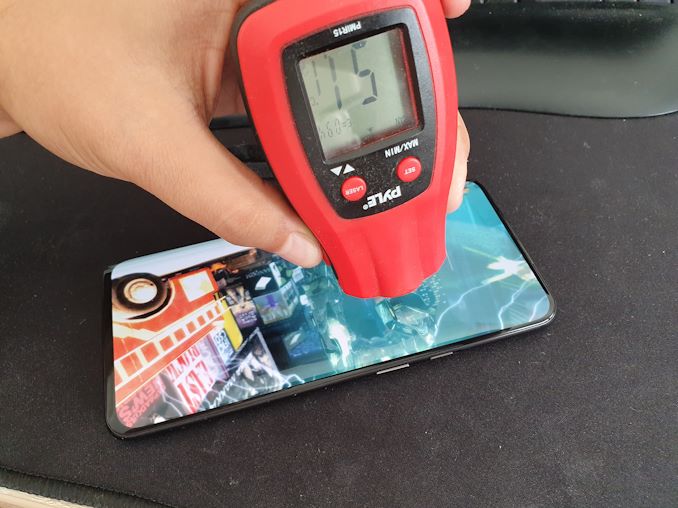








91 Comments
View All Comments
hadrons - Wednesday, June 19, 2019 - link
Currently great camera is a huge factor for premium phones and one plus has not been up to the big players for a long time, but still somehow people rate this phone better than a pixel phone. Every other Android manufacturers either lag behind or totally behind security or software updates and one plus is one among them. On a daily end user level scale, one plus is only as fast as the SOC and the Android version in it. Price is the only factor that I find some advantage in buying one plus.1_rick - Wednesday, June 19, 2019 - link
Not only that, but $670 for the base model (I'm only considering the Pro as you "can't get" the 7 in the US) is hardly a "flagship killer". That honor would more properly belong to something like the Xiaomi Mi Mix 3, at $470 on AliExpress.MrSpadge - Wednesday, June 19, 2019 - link
... or the Mi9, starting at 400€ in Germany (equivalent to ~400$ in the US).ilaicohen - Saturday, July 27, 2019 - link
Wth guys you can just download the Gcam and there you go, a better camera. And just saying, the camera isn't as bad as everyone says. Actually, it's pretty great. And about the price, it's half the price of the iPhone XS Max (with tax) so yea. It's a flagship killer. So cut off the bullshyt and go get yourself a OnePlus 7 Pro.badbanana - Tuesday, June 25, 2019 - link
i don't get this "..should have a better camera" thing. most users can't even tell what "f/2.0 lens" mean. for me, as long as it takes a clear photo, without the shakes then it's a "better" camera.i've owned every Samsung (for once never got any software updates) flagship since the S3 came out and found that OnePlus gets software updates whenever it's available.
systemBuilder - Friday, July 19, 2019 - link
I have a OnePlus 6T. The camera beats and iPhone 6S in dxomark. For me, that's "Good Enough". Freaking out over a compromise camera (cellphone cameras are ALWAYS compromise cameras) just shows that the reviewer has no perspective on life. I enjoy the on-screen fingerprint reader, the fantastic battery life, and the generous RAM & Flash Storage and the OLED screen, all at a great price.johansyren - Tuesday, November 10, 2020 - link
As someone who switched from a wireless charging phone to a OnePlus with insanely fast Dash charging, I genuinely prefer the later. I just don’t have to worry about charging my phone anymore. I’ve been on this phone for 1.5 years now and I’m still in awe every time I charge it because of it’s speed.
I read about it at https://casinovalley.ca/best-picks/best-gambling-p...
Most of the time I plug it in when I’m getting ready to head out and in 10 minutes it charges up to a point that I don’t need to worry about battery throughout the day. Wireless charging would be a nice bonus, but considering how slow it used to be comparatively, I’d still never actually use it.
Roy2002 - Wednesday, June 19, 2019 - link
It is a great phone, wish it has better cameras.XabanakFanatik - Wednesday, June 19, 2019 - link
No mention of the terrible stuttering when the phone is in 90Hz mode and you play a 60FPS video? OnePlus claims the display's refresh rate is adaptive to the content yet it cannot smoothly "adapt" to play a 60FPS video.By far the biggest complaint I have with the phone - If I want to watch a 60FPS video without terrible stutter, I have to go to the options and switch the display to 60Hz mode before, then switch it back to 90Hz mode after.
Xinn3r - Wednesday, June 19, 2019 - link
Now that's a deal breaker